Ch. 26 Magnetic Forces and Fields - PollEv
1/15
There's no tags or description
Looks like no tags are added yet.
Name | Mastery | Learn | Test | Matching | Spaced |
|---|
No study sessions yet.
16 Terms

B. out of the screen
compass points in direction of magnetic field (ccw)
use thumb curl rhr, I (thumb) points out of screen
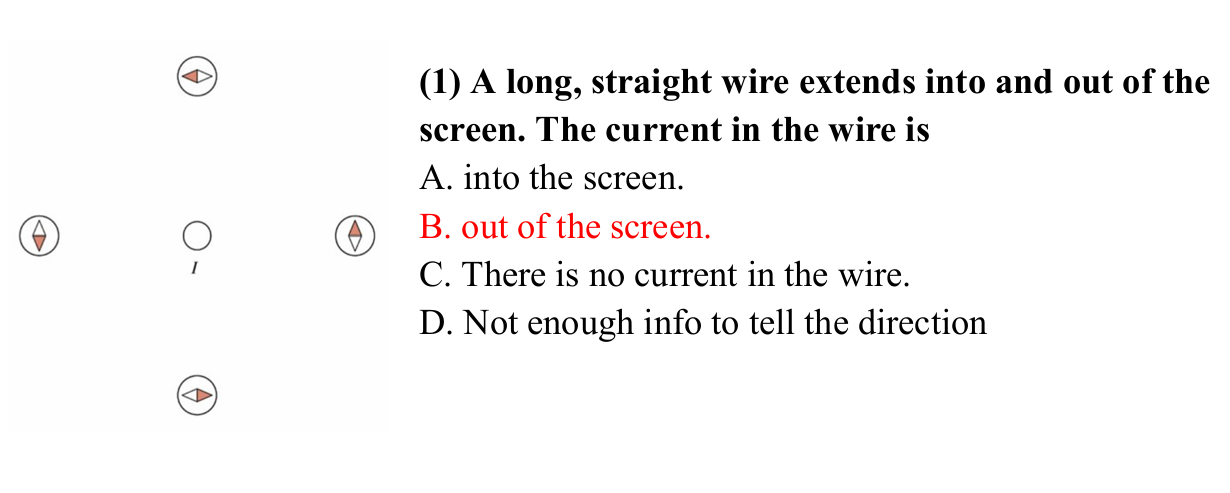

C. Up
First, use curl finger rhr to find direction of magnetic field (velocity/current = thumb, magnetic field = fingers).
Magnetic field is clockwise around the charge. To the left of the charge, the field points up.

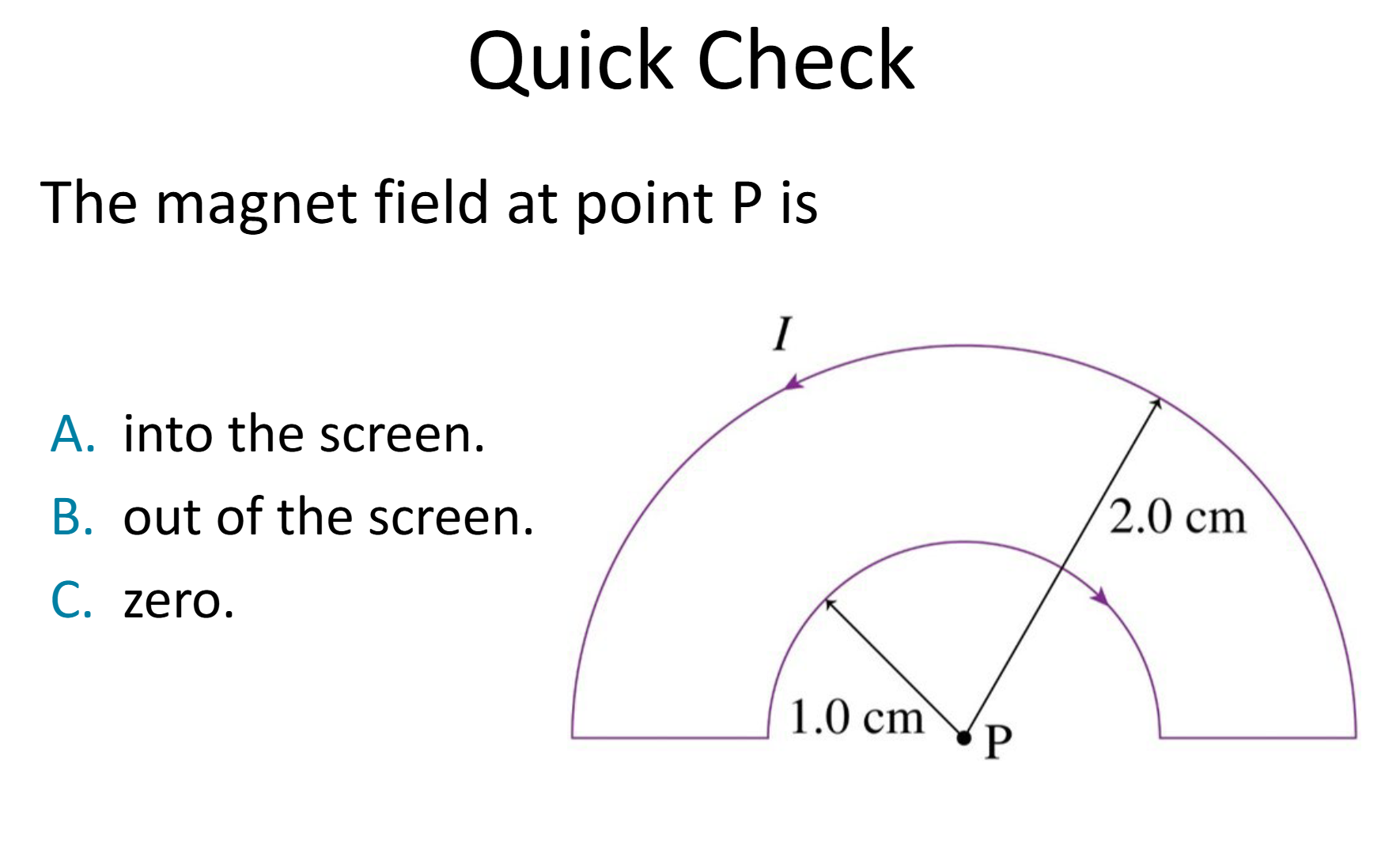
A. Into the screen
The portion of the loop that is closest to P has a stronger magnetic field. Its current flows in the clockwise direction. Using rhr, the magnetic field at points into the page.

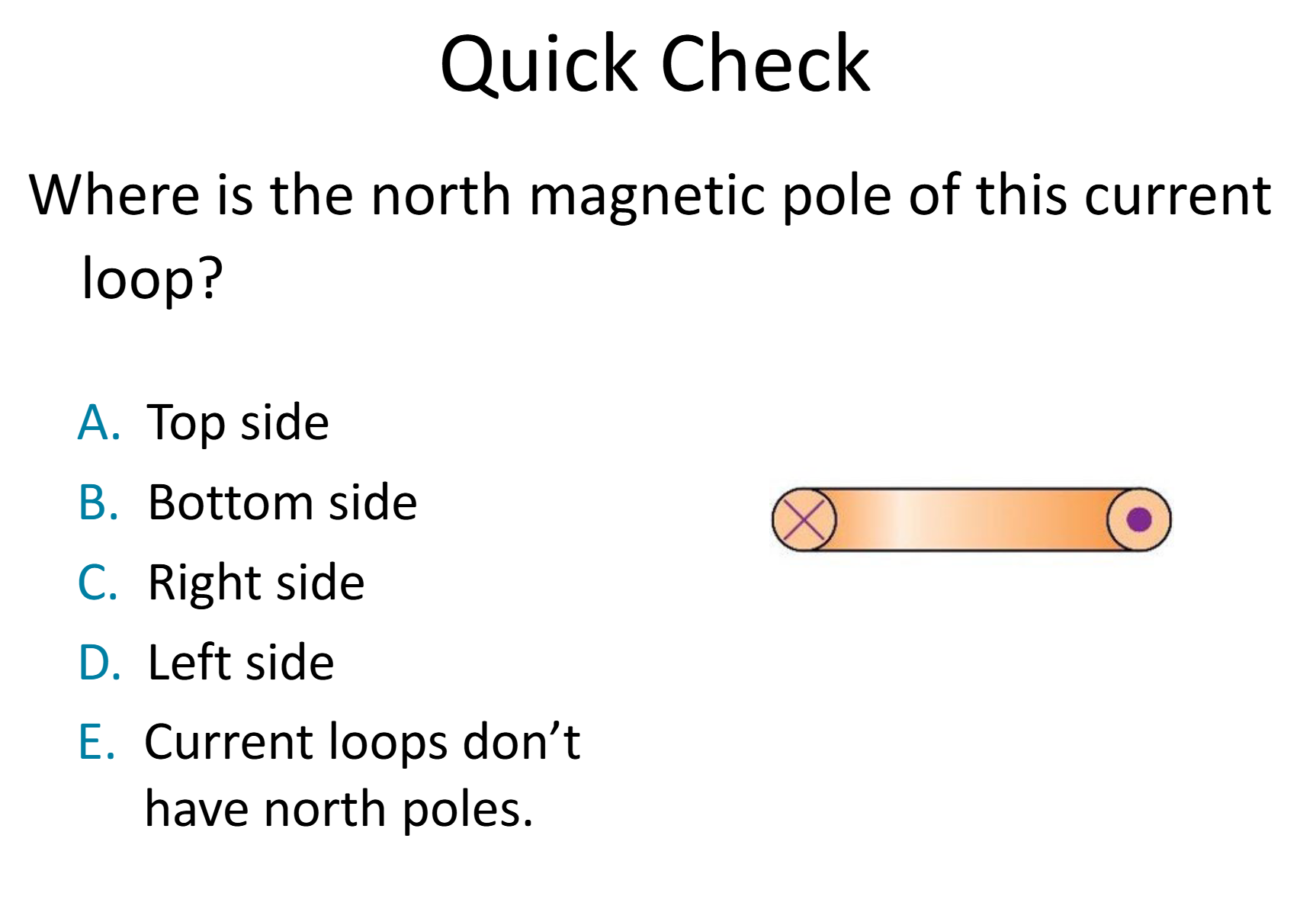
B. Bottom side
Using rhr, the fingers should curl into the page from the left side and go out of the page on the right side. This requires the thumb to point down. The magnetic field points to the north pole, which is on the bottom side of the loop.

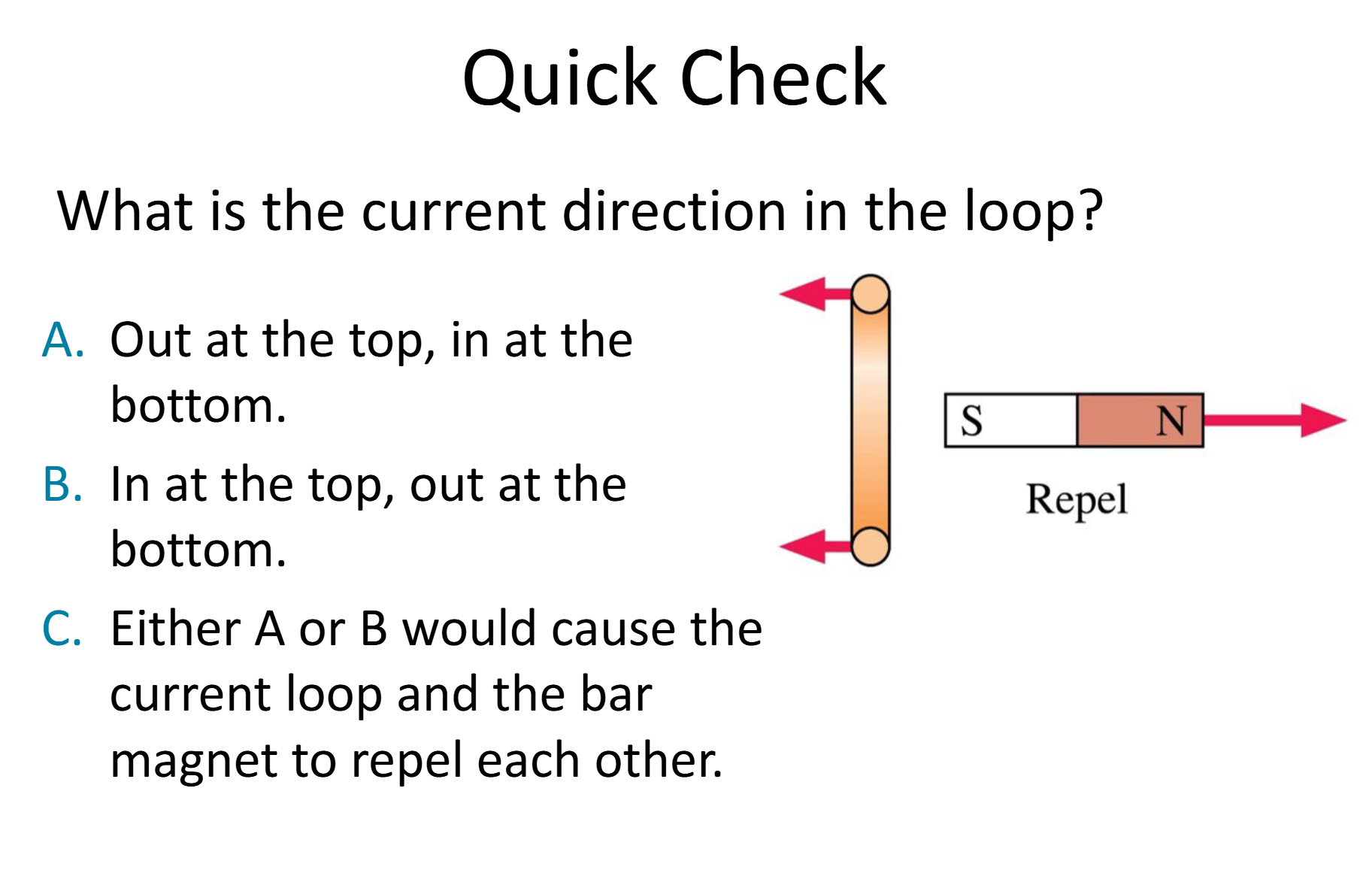
B. In at the top, out at the bottom
Like poles repel. The loop’s S pole is to the right of the loop and its N pole is to the left of the loop. The magnetic field points from the S pole to the N pole (within a magnet).
Use curl finger rhr to determine the direction of the circular current. The current is ccw coming out of the top and into the bottom.

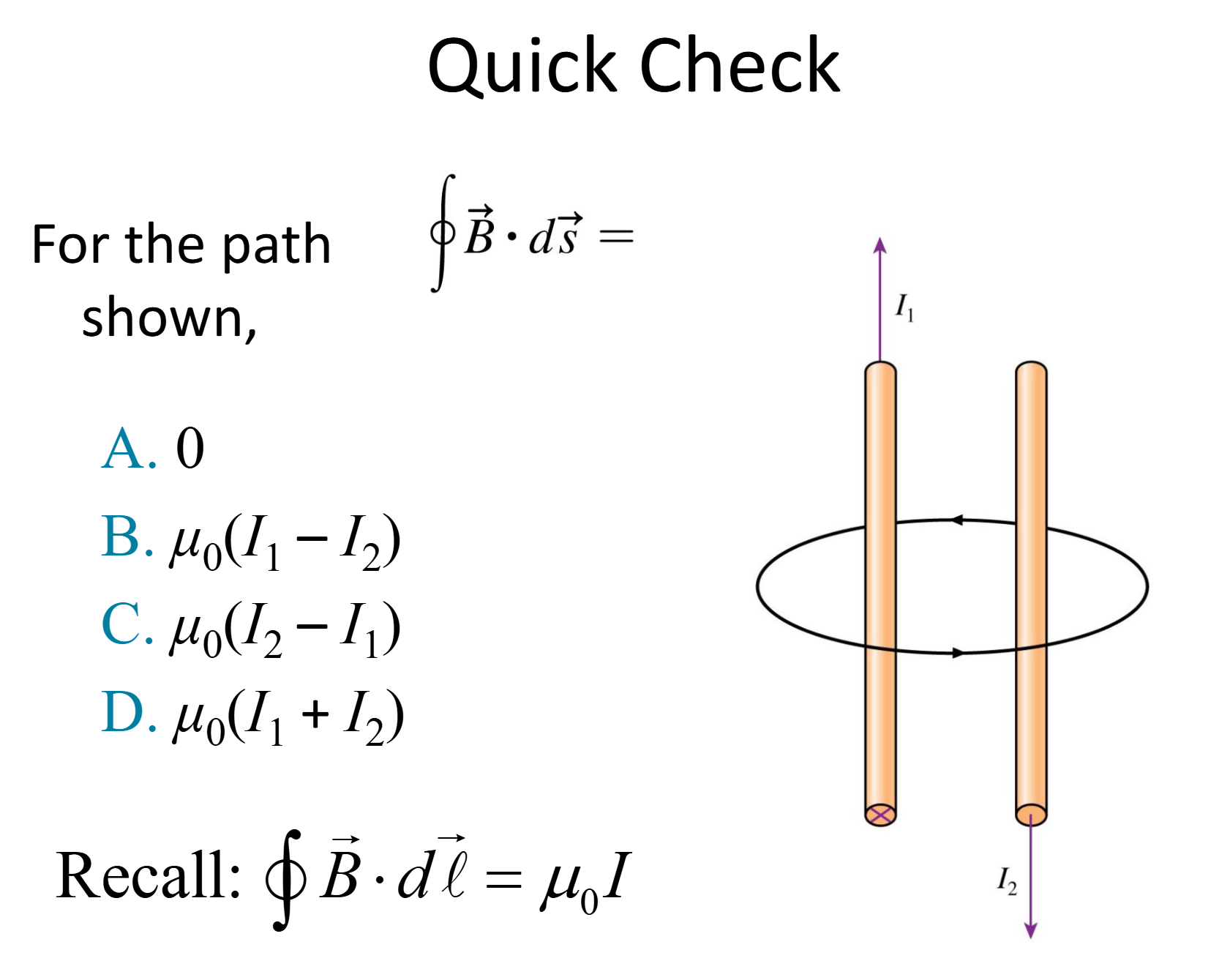
B.
The strength of the magnetic field between the two loops in opposite directions is due to their net current (I1 - I2).


C. 1 A into the screen
The total magnetic field is given as mu(7.0 A).
I1 does not need to be considered because it is outside of the loop.
I2 is 8.0 A out of the screen which is greater than the total I. I3 must be 1.0 A in the opposite direction (into the screen).

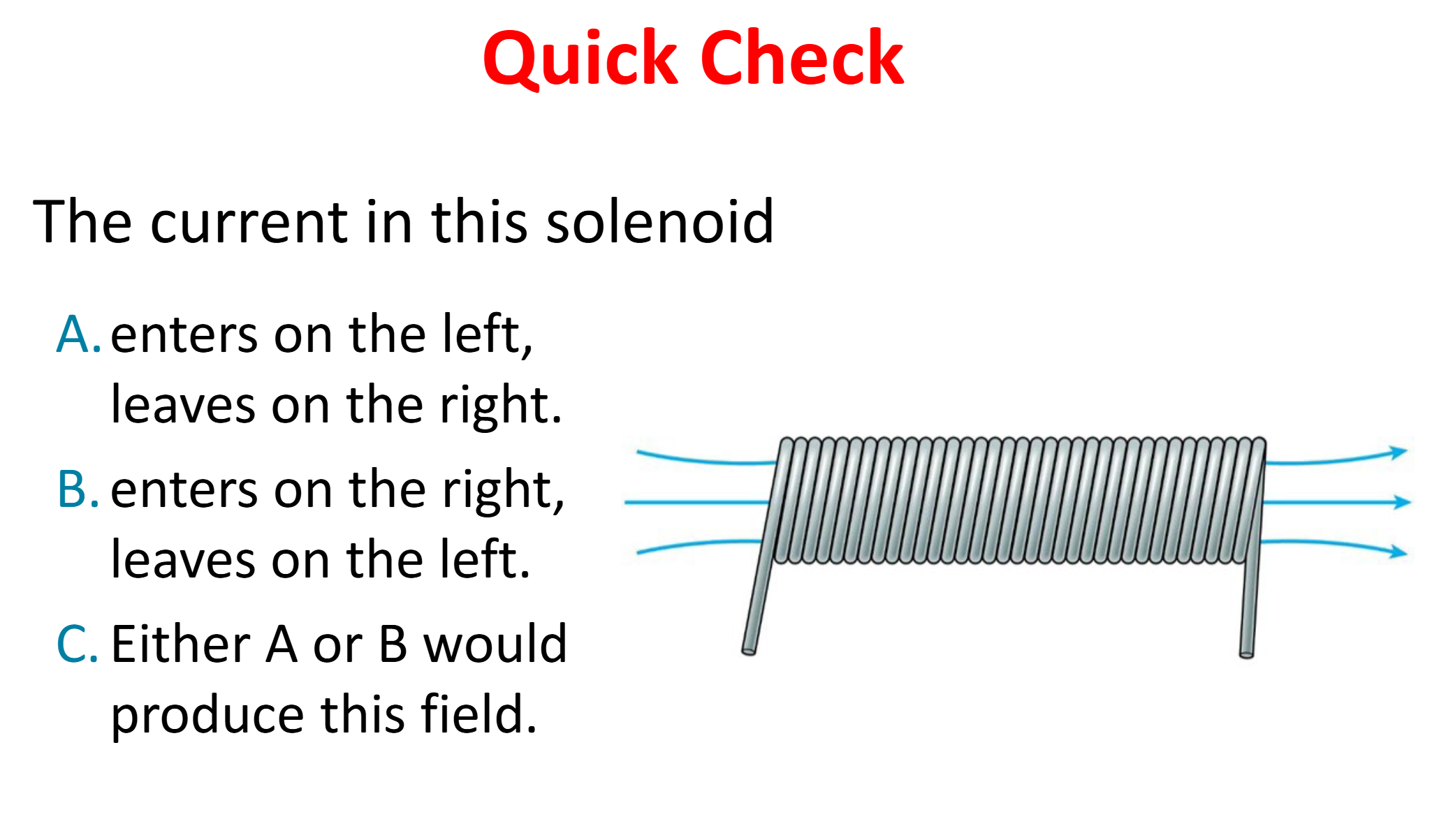
B. enters on the right, leaves on the left
Use right hand with slightly curved fingers and point thumb to the right. The current (finger) curl starting from behind the solenoid. This shows that the current enters from the right side (starts behind) and exits from the left side.


C. B2 = B1
The magnetic field inside the solenoid is proportional to the number of turns (N) and inversely proportional to the length (L). B1 is proportional to N/L. B2 is 2N/2L which is equal to N/L.
B2 = N/L = B1
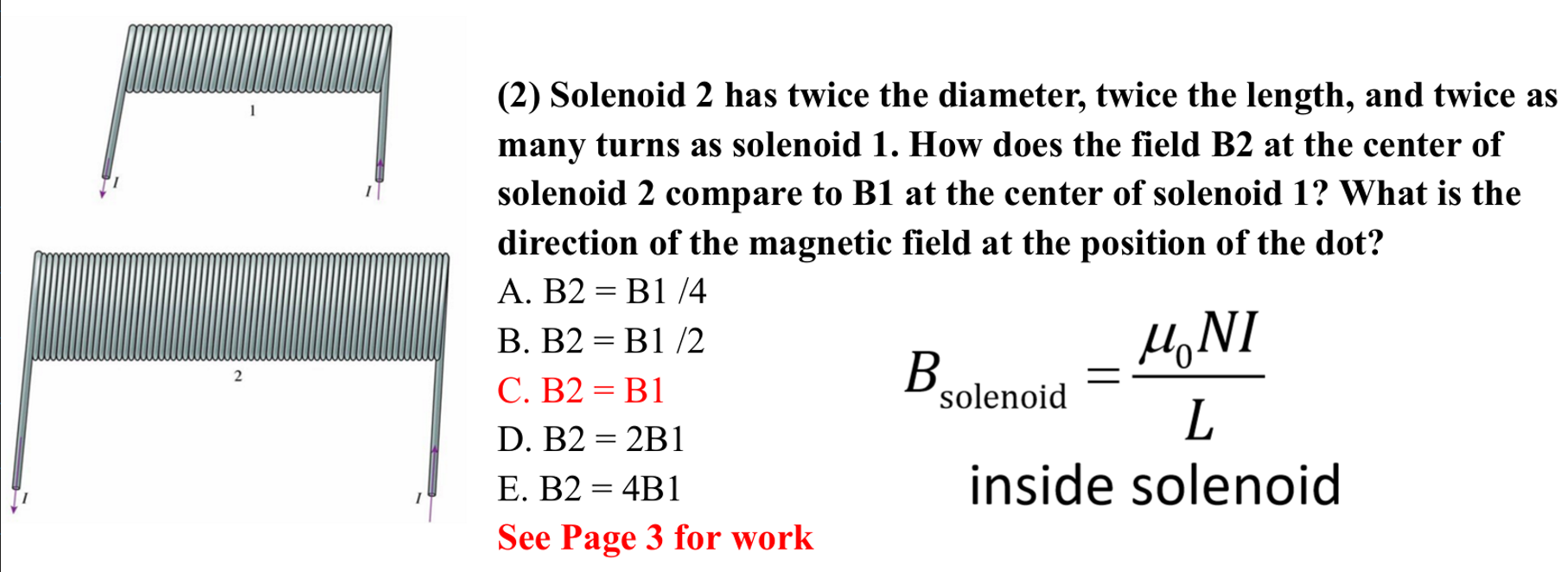
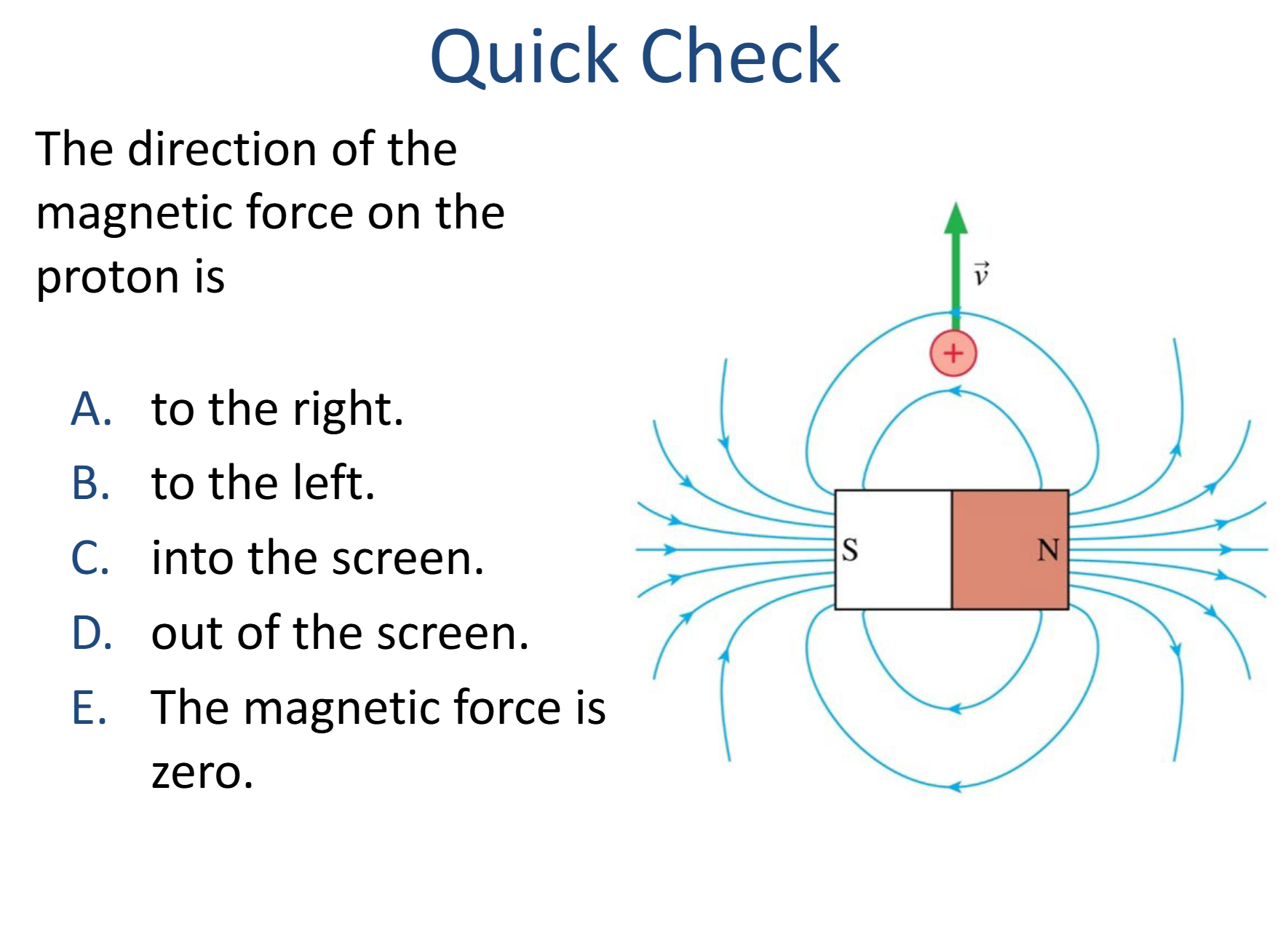
D. Out of the screen
The magnetic field above the bar magnet points to the left. The velocity points up. Using rhr, the force points out of the screen.
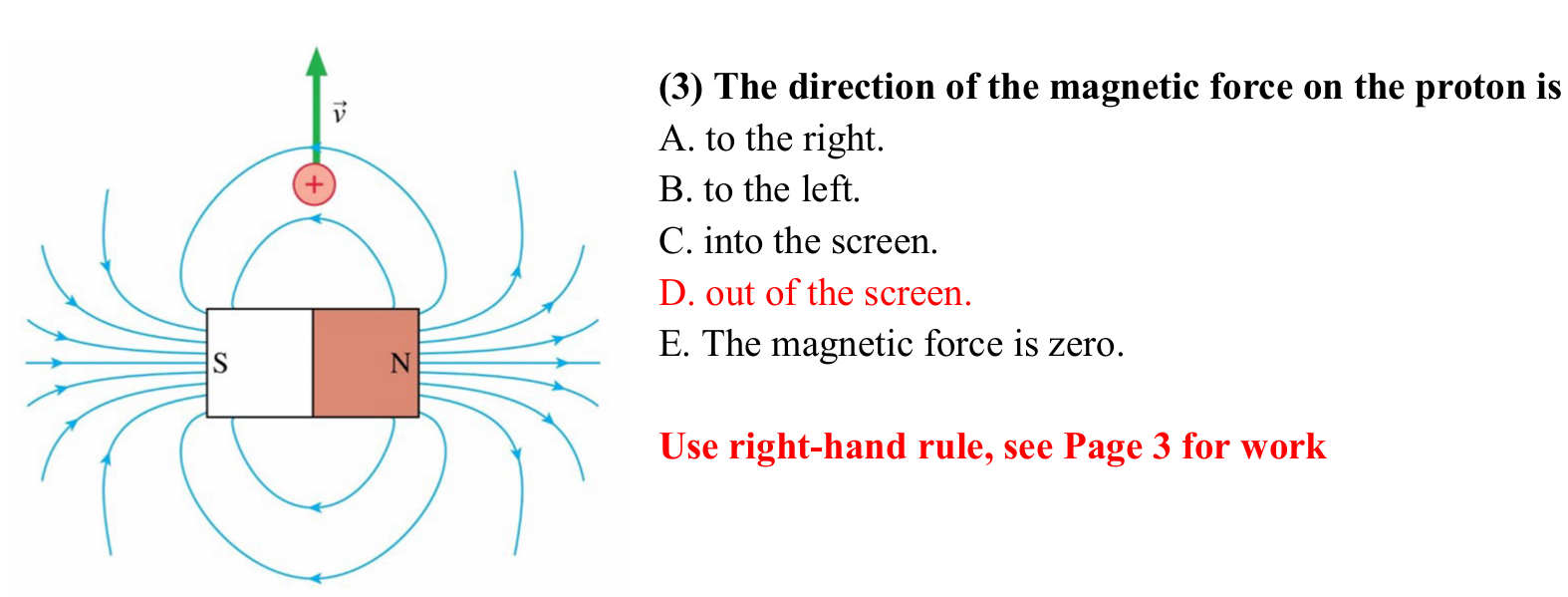

E. The magnetic force is zero
The magnetic field to the left of the magnet points to the right. The velocity of the electron is to the left. The angle between the velocity and field vectors is zero degrees, so the magnetic force equals zero (F = qvBsin theta)

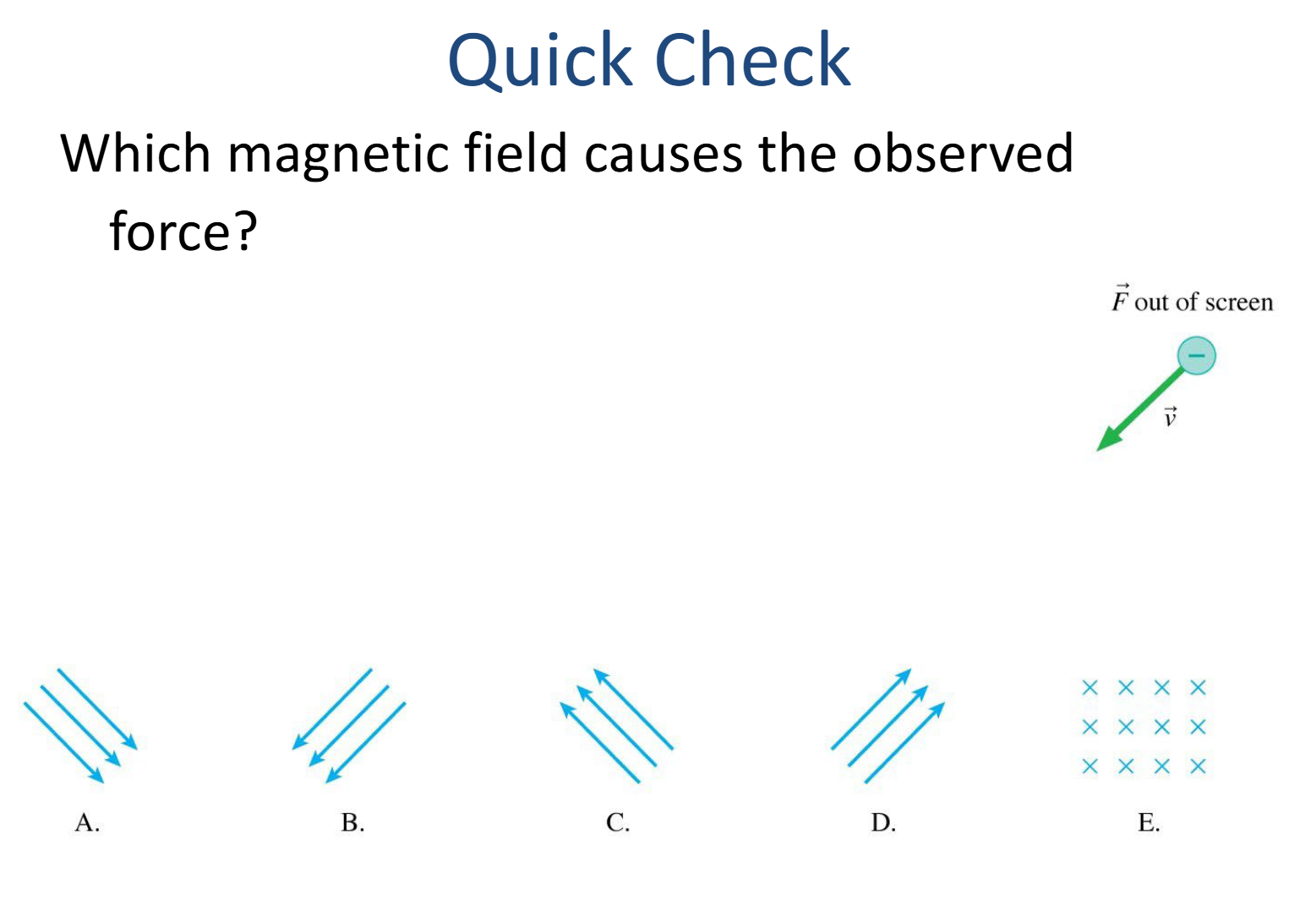
C.
Since the particle is negatively charged, the force in the rhr can be switched to point into the screen. The thumb points in the direction of the velocity and the pointer will give the direction of the magnetic field.
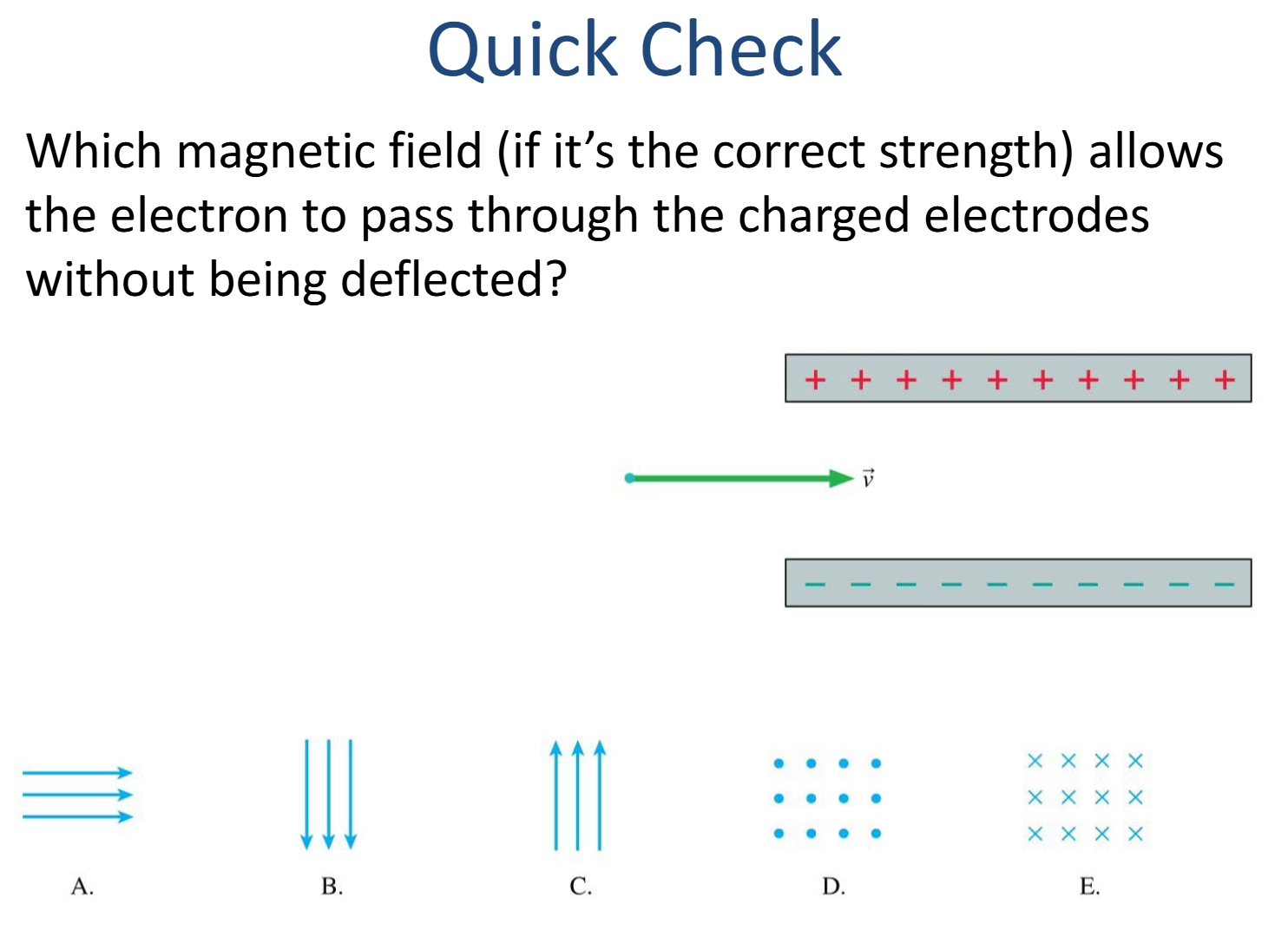
E.
The positively charged electrode creates an upward electric force on the electron since the charge is attracted. The magnetic force needed to prevent deflection must point downward. Since the particle is negatively charged, for rhr the force can be switched to point upward. Thumb points right. The magnetic field points into the screen.
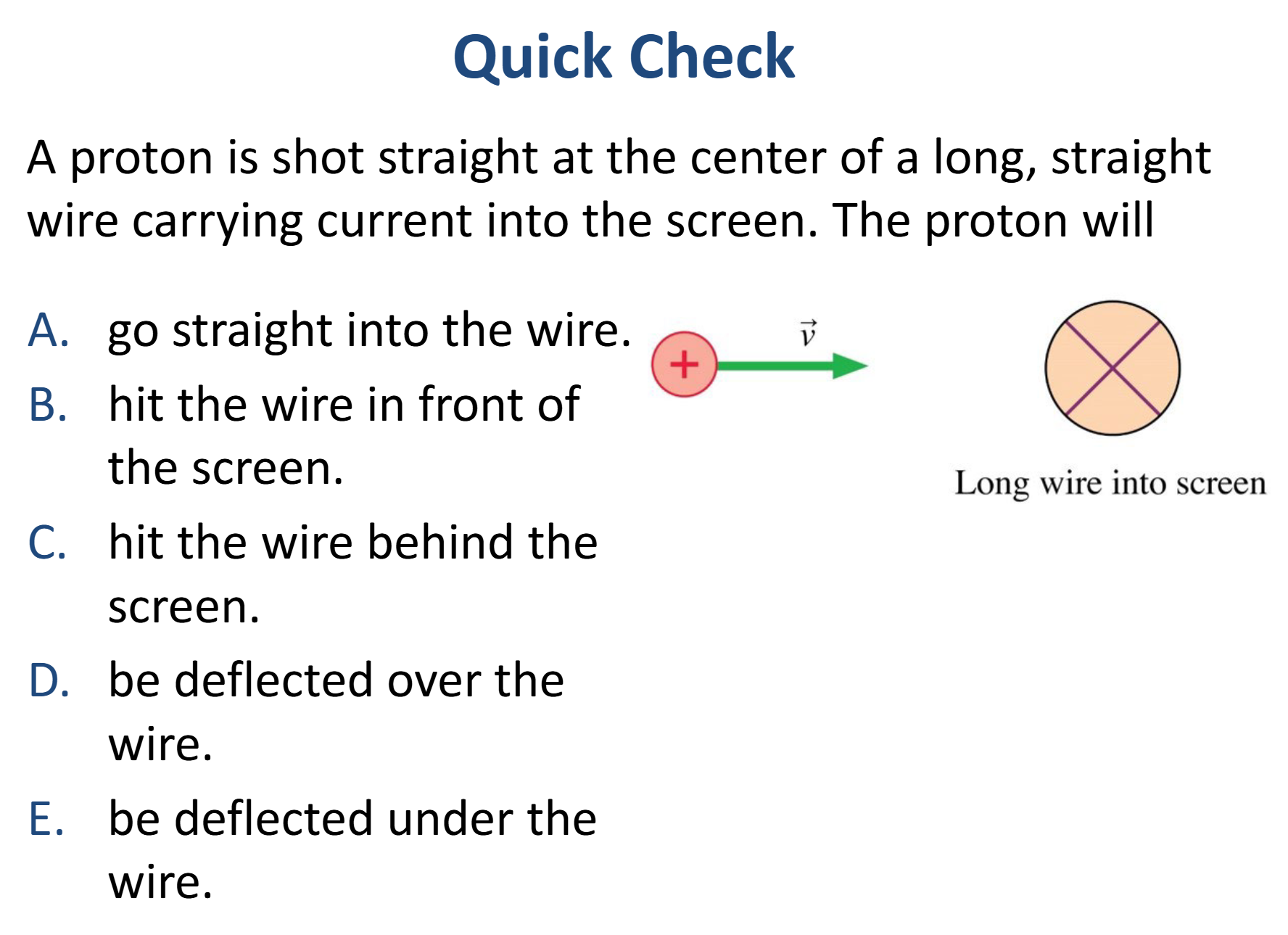
B. hit the wire in front of the screen
First, use the curl finger rhr to determine the magnetic field of the wire with the current (thumb) pointing into the screen. The magnetic field to the left of the wire points up. Then, use the force rhr to determine the direction for the magnetic force given velocity points right and field points up. The force points out of the screen, so the particle will be deflected in this direction and hit the wire in front of the screen.
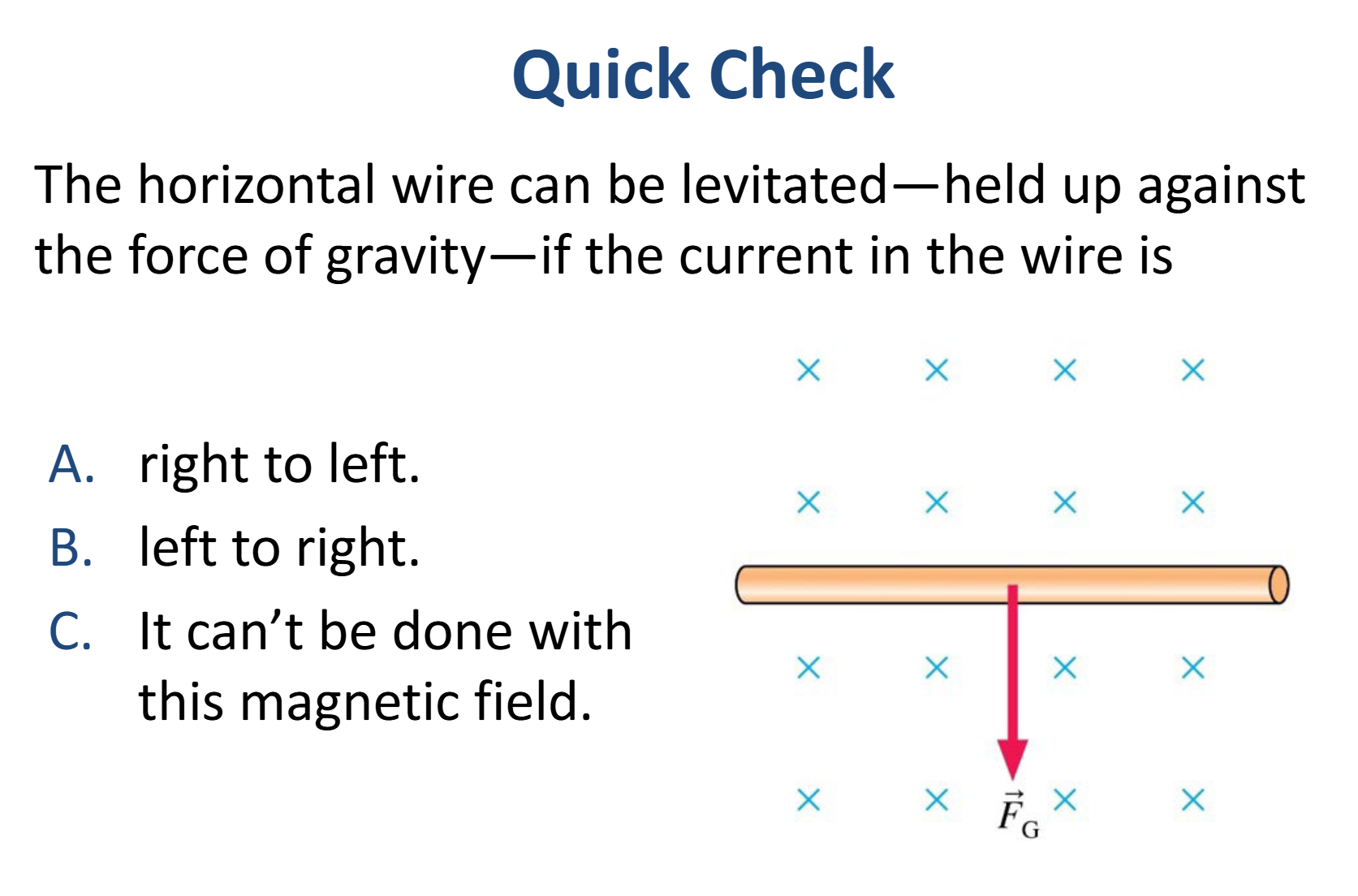
To levitate the wire against the force of gravity, the magnetic force must point upward. Use the force rhr with the field (pointer) pointing into the screen and the force (middle) pointing up. The direction of the current will be given by the thumb.

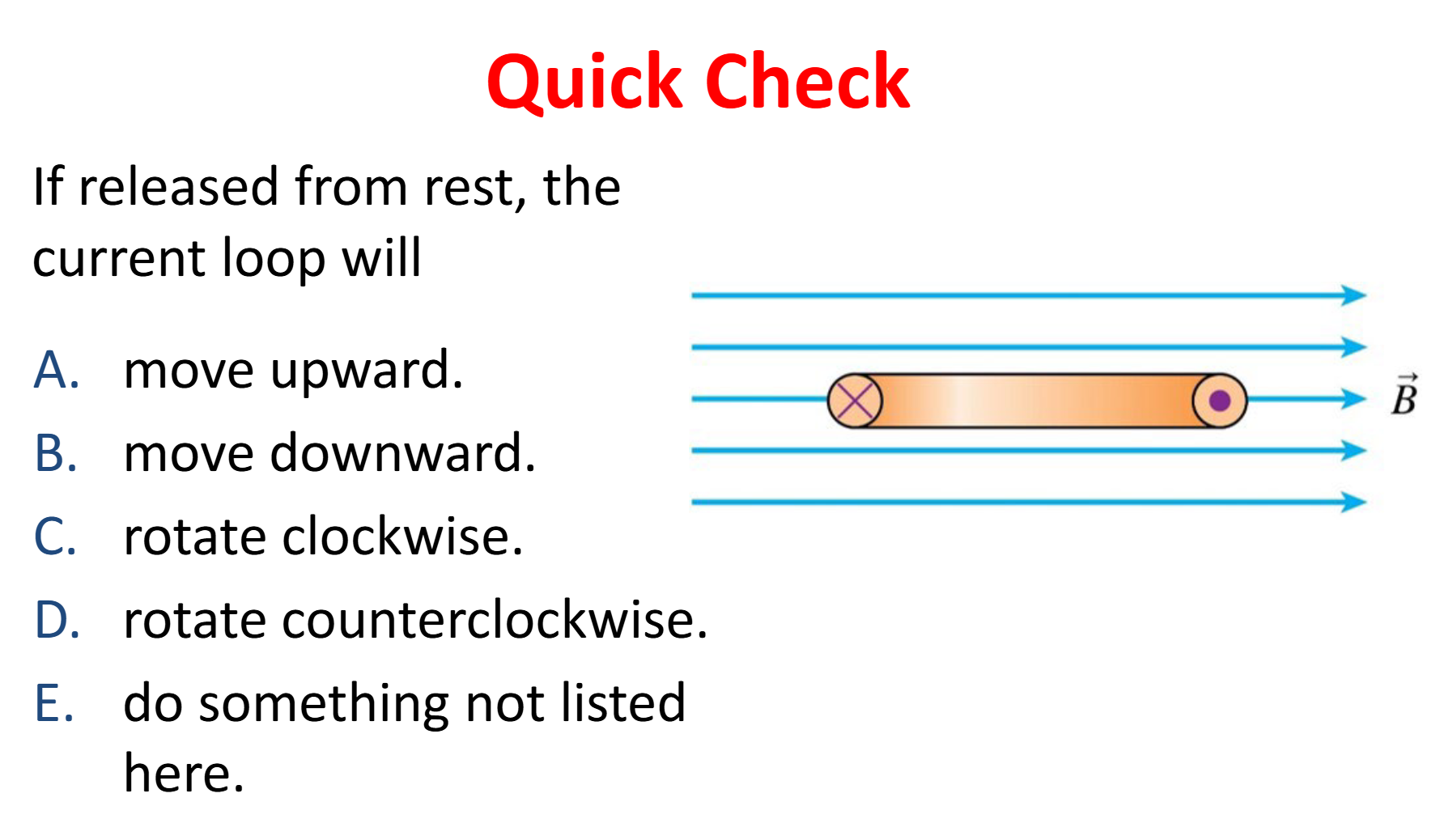
D. rotates counterclockwise
The current flows into the screen on the left side of the circle and flows out of the screen on the right side.
Use curl finger rhr with fingers curled around clockwise. The thumb points down, giving the direction of the magnetic dipole moment. Since the magnetic dipole wants to align with the external magnetic field, the loop will rotate counter clockwise (imagine the thumb pointing down initially then rotating ccw to point right, aligning with the field).